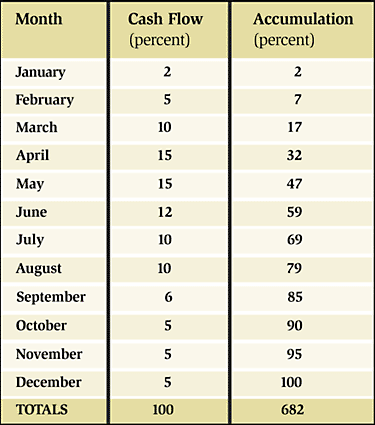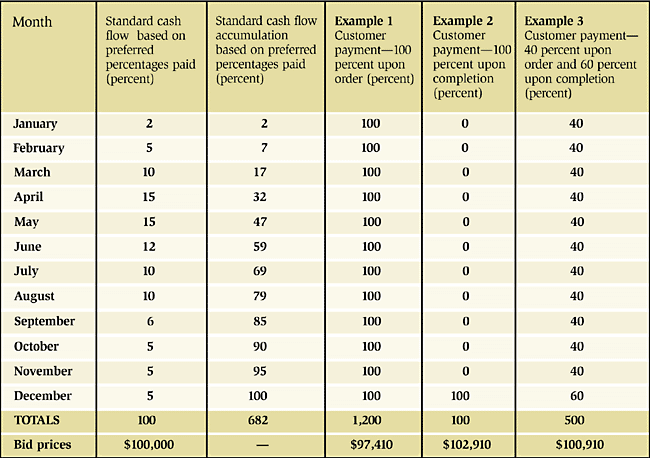Four Rules for Bid Price Profitability
The power-generating industry uses 90 percent of the coal mined in the United States to produce about half of U.S. electrical power. Coal is easily transported and it is relatively inexpensive. It costs about $3 to generate a million British thermal units (Btu) of power using coal, compared to more than $7 to generate the same amount using natural gas or oil, according to the U.S. Energy Information Administration.
However, coal-related emissions are blamed for a high percentage of the total nitrogen oxide (NOx), sulfur dioxide (SO2), and mercury emissions in the United States. The head of the U.S. Environmental Agency predicted that in order to meet the Clear Skies Act, power-plant owners would need to spend more than $50 billion on new air-pollution-reducing equipment or steam-generating boilers. Southern Company, for example, recently budgeted $5 billion for scrubbers and related equipment to help cut back on air pollution. With these factors in play, it is necessary for the power-generating industry to understand bid prices in order to remain profitable.
Cash flow and profitability are achieved through money management, cost control and the ability to recognize profits unseen by ordinary bookkeeping techniques. What appears to be a low or high price may not be that simple. One must evaluate the pricing formula, based on the four rules of bidding (see below), before deciding whether the price is high or low. Part of this pricing formula recognizes cash flow and the terms of payment connected to the dollars presented in the bid price. This recognition of cash flow and attention to the terms of payment must be included in the evaluation of a bid price.
Determining the size of a major air-pollution project, in terms of material and labor, requires an in-depth understanding of marketing strategy, engineering, manufacturing, labor costs and the proper structuring of the bid price. Major capital projects should never be a cost-plus-markup approach as used on off-the-shelf goods. Both the bidder and the company soliciting the bid need to carefully evaluate the bid price. This means understanding the four rules of bidding:
Rule 1: A bid price should be based on good achievable performance.
Rule 2: A bid price should always reflect the conditions of the day.
Rule 3: A bid price should recognize design considerations.
Rule 4: A bid price should take into consideration the customer’s financial position.
Looking at rule four also means asking tough questions such as: Do you as a bidder recognize cash flow as a profit or loss item? Does the potential customer or bidder recognize cash flow, and do they have a cash flow problem? Do you as a bidder have a cash flow problem?
The ideal way to operate is with other people’s money. But how do you accomplish this? The answer lies in the terms of payment and billing. Depending on the size of the project, terms of payment can be set in many ways, including, 1. as a percentage at the time of the order, 2. as a percentage upon shipments, 3. as a percentage upon completion, 4. as a guaranteed retention, 5. all up front and 6. all upon completion.
Each of these terms of payment alters the bid price. Remember, a bid price is a price that is given or accepted on a real project that is to be completed in a specific time period and tied to a pre-determined set of terms and conditions.
Cost
It is important to understand your cost and how it can be perceived starting from the bid stage to the actual contract work. The cost is the total sum of the fixed and variable expenses to manufacture a product. Fixed costs include the expense of running the business (rent, utilities, office equipment, insurance, salaries, depreciation and property taxes). Variable costs include raw materials, hourly wages paid to laborers and contractors, warehouse and shipping costs and manufacturing efficiencies (efficiencies covering shop loading, employee labor performance and the use of new or antiquated equipment). These variable costs, especially labor performance, once evaluated, become a static value for a semi-annual or annual period of time. This may cause a current spike in costs for a project that may span years to complete. At any given time along the timeline, your costs and profits could vary depending upon how you perceive cost and profit.
Therefore, you must establish or define your cost that will include, or be based upon, your expected attainable efficiency of operation (i.e., the number of bricks laid per man, square feet per day for installing insulation or lagging, etc.) This cost should be time-related to the project timeframe.
Payment and Cash Flow Terms
Once you have established your cost and bid price, you must decide upon terms of payment and cash flow over the span of the contract. In these days of low interest rates, cash flow may not seem so great, but even a small change in the price can affect the outcome of a bid. Therefore, it will be very important to know or establish percentages of completion over time. As stated earlier, it is more desirable to use other people’s money. The best scenario would be to have the customer pay as you go. Rather than dealing in dollar amounts, it will be easier to use percentages to determine how a bid price and payments will flow. First, there is up-front engineering cost (this might be 10 percent of the total cost), followed by material purchasing at different points of the project time line (estimated at 20 percent). Then there may be shop costs (forecasted at 15 percent) and field labor costs (estimated at 25 percent) that need to be factored in. Take into consideration how the customer will perceive your bid price when establishing your terms of payment and cash flow. Ask yourself, can the bid price appear to be too low to the customer because of the up-front money involved? Does the customer evaluate terms of payment in deciding who gets the award? Does the customer recognize the differences and the affects different terms of payment have on the bid price?
Once you have established your costs over the duration of the project, you can then establish a chart to determine the cost of money or cash flow that you would need to recover during the contract period. Consider an example of a lagging and insulation project spanning 12 months and using a flat percentage of the total cost. See Table 1.
Table 1 shows a base for cost of money or cash flow that can be compared to the cash flow as recovered based on the projects terms of payment (i.e., percentage on order, percentage on shipments, percentage on completion, guarantee retentions, all up front or all on completion).
Table 2 shows some typical examples. In example 1, the customer pays 100 percent up front, assuming a 6 percent interest rate. The cost of money = 6 percent/1,200 percent x (682-1,200) = -2.59 percent reduction of bid price. Or, the customer could pay 100 percent upon completion, assuming a 6 percent interest rate. In that case, the cost of money = 6 percent/1,200 percent x (682-100) = 2.91 percent added to bid price.
Having first developed a bid price for the project ($100,000) based on your standard cash flow, this bid price can then be modified to reflect the terms of payment as they are negotiated. This is why experts advise that you take into account the cost of money (cash flow) when determining your base bid price.
Once your base bid price has been established, it can then be altered to appear more attractive. It can be lowered to reflect a positive cash flow (i.e., 100 percent upon order) or adjusted to reflect terms of payment requested by the customer (i.e., 100 percent upon completion). There are many reasons for terms of payment, and they all affect the bid price. For example, the customer may desire to pay a percentage up front, because of a tax issue, and then pay a percentage on completion, due to his own internal cash flow considerations (see example 3 in Table 2).
Conclusion
In the coming years, the power-generating industry will need to invest billions of dollars in costly pollution-prevention equipment. Whether you are a bidder or a customer awarding a large air pollution or new boiler project, understanding the bid price is crucial to staying in business. The recognition of cash flow and attention to the terms of payment are equally important when understanding the four rules of bidding. Cash flow and profitability are all about money management, cost control and the ability to recognize profits. When the power-generating industry begins to recognize and understand what a low bid price is, then everyone wins and stays profitable.


